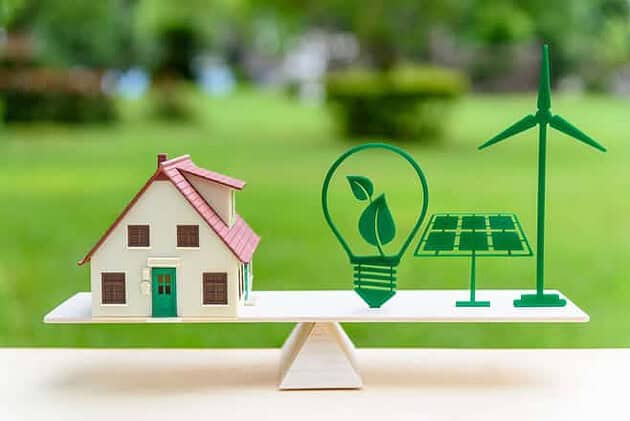Increasingly, homeowners around the world are paying attention to how their habits and lifestyles impact the environment. The biggest sources of greenhouse gas emissions tend to be out of the control of consumers; industrial pollutants, agriculture, and transportation all require significant overhauls to make them more sustainable and environmentally friendly.
But that doesn’t mean you can’t have an impact. With eco-savvy improvements, you can make your house much more environmentally sustainable, reducing your consumption and protecting the environment in the process.
These are just some of the strategies you can use to do it.

Reduce New Purchases
First, try to reduce your new purchases. Everything you buy has an environmental impact, whether it’s obvious or not. Every product needs to be grown, created, or manufactured, and these processes all play a role in emitting greenhouse gases or polluting the environment in other ways, even if that role is small. Products also need to be shipped from one place to the other, sometimes crossing entire countries to get to your local stores.
The most straightforward way to do this is to avoid buying things you don’t need, especially luxury indulgences. But there are other strategies that can help you reduce your consumption overall:
- Avoid one-time-use items. Avoid disposable items whenever you can. Instead of buying throw away plastic silverware and paper plates for your next gathering, suck it up and wash the dishes. Instead of buying disposable plastic straws, rely on a washable stainless steel straw for all your beverage drinking needs.
- Buy used. You can also reduce your impact by buying used. Here, you’re not necessarily reducing your consumption; you’re just buying an item that was already in circulation rather than increasing demand for newly manufactured items.
- Share and borrow. Similarly, consider getting involved in your community by sharing what you have and borrowing what you don’t have. There’s no need to buy a snow blower if you can simply borrow your neighbor’s on occasion.
Install a Bidet
Did you know that a bidet can have a significantly positive impact on the environment? Toilet paper isn’t the worst thing for the environment, but we tend to use a lot of it. Most of us use upwards of 100 rolls of toilet paper every year, and if you have an entire family living in your house, your household paper consumption will multiply proportionately. You can eliminate almost all toilet paper usage by investing in a bidet that uses a trivial amount of water to help you get cleaned. As an added bonus, water tends to do a better job cleaning than any amount of toilet paper.
Upgrade Your Windows and Doors
Your heater and air conditioner will be forced to run more aggressively if your house is leaking air. That’s why one of the best upgrades you can make is improving your doors and windows, which are the most common culprits for leaking air. If your windows are very old, consider replacing them entirely. Otherwise, check for air leaks and seal them up if you can.
It’s also a good idea to evaluate your insulation and improve your insulation when possible. Blown insulation is very easy to add, and it can make your house much more resilient to temperature changes.
Evaluate Your Appliances (and Upgrade If Necessary)
Next, evaluate your current appliances, like your washer, your refrigerator, and even your oven. Modern appliances tend to be much more energy efficient, capable of accomplishing the same feats with far less water, electricity, or natural gas. That said, buying a new appliance for its own sake can be wasteful; only upgrade your appliances if your current appliances are egregiously inefficient or if they’re not working properly. Otherwise, try to squeeze a few more years out of them.
Minimize Utility Consumption
As implied by our sections on reducing consumption and improving your windows, reducing your utilities and sewage can have a dramatic impact on the eco-friendliness of your house. These are some of the best ways to minimize your utility consumption:
- Move to a smaller place. It’s a big step to take, and one that most people won’t be willing to make, but living in a smaller house will reduce your utility costs to a fraction of what they were before.
- Turn things off when not using them. Take turns turning things off when you’re not using them, including lights in rooms that you’ve recently left.
- Adjust the thermostat. If you can stand it, try to keep the temperature a bit higher in summer and a bit lower in winter.
- Monitor your water usage. Pay attention to how long you spend showering, washing your hands, and washing dishes.
Some of these strategies cost thousands, or even tens of thousands of dollars, so it’s understandable why you may not be able to accomplish all of them. But many of these upgrades and improvements are inexpensive or free – and even the smallest behavioral changes can add up to have a massive impact at scale. Take the time to examine your own lifestyle, and make whatever changes you can afford (or withstand).














